It is critical to utilize the right gauge cable for the panel size before installing electrical services. We cannot emphasize the necessity of using the appropriate wire size and grounding. It’s not simply a performance problem; it’s also a safety one!
So, if you need to determine what grounding wire size for 200 amp service is good to use, keep scrolling for more!
About 200-Amp Service Wire Size
The National Electrical Code mandates a maximum #2/0 AWG or #4/0 AWG copper wire coiled within a standard 1.5-inch PVC 40 or 80 conduits for underground service. When installing three inputs in the same conduit, we suggest 2 or 2.5 inches.
You should use copper or aluminum-coated wires that measure at least AWG #4/0 or more.
A 200 amp electrical service implementation will require an electrical permit and is performed by a competent electrician in line with local electrical rules.
These service cables will connect the wiring closet to the major switchboard, supplying electricity to the remainder of the home.
As the landlord, you are accountable for putting in the meter box and service wiring flowing to the center panel.
200 Amp Service Ground Wire Size
It necessitates 2/0 copper wire for 200 amp service, or #4/0 aluminum or #4/0 copper-clad wire are other options. Many electrical contractors prefer a 4/0 plated copper or aluminum 200 amp service ground.
The output voltage and the cable length decide which wire is utilized, as longer runs call for a larger gauge. For example, a thicker wire will give greater distances to transition from 100 feet of AWG wire to kcmil.
How Many Wires Does A 200-Amp Panel Need?

There are three wires that are placed from the meter foundation for a basic residential electrical panel in total. Typically, a single cable is employed. However, pulling separate wires is allowed.
Two cables in black or red color are often undergrounded and hot conductors. Each transmits 120 volts, allowing the panel to supply 240 volts of electricity. The third one is the neutral cable, which will connect to the grounding or neutral bar.
The Rundowns Of Aluminum, Copper & Copper-clad Aluminum For A 200-Amp Service
The wire material determines the grounding wire size. Aluminum, copper, and CCA (copper-clad aluminum) are the most prevalent. Listed below are the advantages and disadvantages of each:
Copper Wire
Copper wire is preferred by licensed engineers and customers, particularly for branch circuits. It offers several advantages and some disadvantages, including:
Advantages
- Conductivity: Copper is the second most conductive metal after silver. Because copper can sustain larger voltage sources, smaller test leads may be used.
For the same conductivity, copper wire’s diameter is only half of an aluminum wire’s.
- Heat resistance: Copper wire is more stable at high temperatures than aluminum due to its conductive nature. As copper wires do not stretch and expand like aluminum cables, they remain tightly wound around the lugs.
- Corrosion Resistance: Patina is a soft greenish material that alters the hue of copper’s surface. However, oxidation patina does not affect conductivity.
- Ductile: Since copper is a good electrode conductor, the wires are thinner, making them more pliable and harder to break.
- Distance: Thanks to its strong conductivity qualities and temperature resistance, copper conductors may be employed across longer distances.
Disadvantages
- Higher cost: It will be more costly to set up since manufacturers utilize a lot of copper in their items, which are also pricey.
This expense is transferred to their clients. Furthermore, there is a high demand for copper, which causes the copper cost to rise.
- Heavier: because of its weight, deployment is more difficult.
Aluminum Wire
Let’s take a look at the upsides and the downsides of aluminum wire:
Advantages
- Budget-friendly: Aluminum wire is favored for its less expensive expense, as the conductors are less costly to produce than copper wires.
- Easier Set up: Aluminum is lighter in the material than copper cable, and it is more pliable for bigger wire gauges, allowing for faster assembly.
A qualified electrician likes how easy it is to deal with because it is light and transmits adequate power via the electrical conduit, facilitating speedier installation and lowering labor and material expenses.
Disadvantages
- Corrosion: antioxidant coatings are inactive, so corrosion can cause a fire.
- Heat sensitive: any alteration in the temperature can lead the wire to extend and contrast, resulting in connectivity issues and fire danger.
- Lifespan: you may need to replace the power cord frequently due to quality degradation.
CCA Wire
The aluminum core of CCA wire is wrapped in a lighter copper coating. On the other hand, solid copper wire is constructed entirely of copper. What precisely are the benefits and drawbacks of this type of wire?
Advantages
- Cost-saving: It just contains a trace of copper for the coating. So copper-clad aluminum conductors are typically more economical than solid copper wires. The majority of copper-coated aluminum wires are made of aluminum.
- Lightweight: It is cheaper than copper cable and lighter since it is mostly made of aluminum.
- Flexible: CCA cables are extremely versatile, supporting a variety of uses.
For example, CCA wires are commonly used as the principal conductor in earphones, home radio systems, and other speakers.
In addition, this wire is employed in construction. It is the best alternative for solid copper wire due to its cost-effectiveness and lightweight qualities.
Disadvantages
- Strength: The wire is not as strong as solid copper wire. Due to its aluminum core, it is more susceptible to shatter or split.
- Conductivity: Although it is still more capacitive than aluminum, it lacks the resistance of a solid copper wire.
Will A 200 Amp Service Need Grounding?
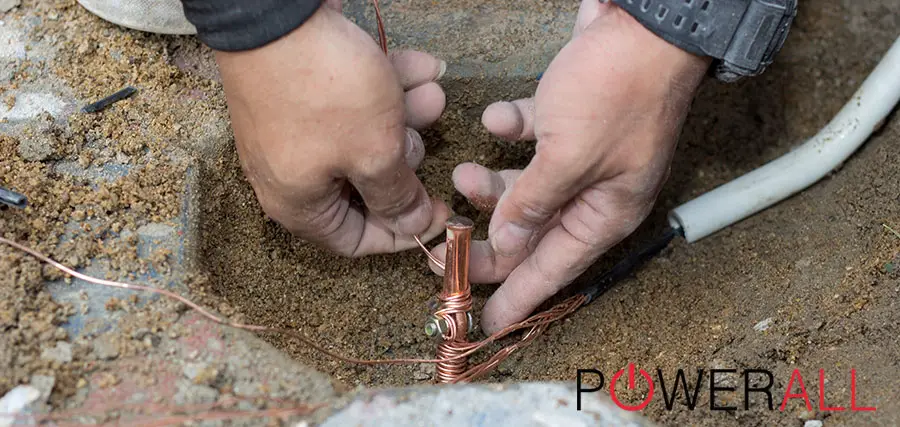
Yes.
A grounding conductor system is required in every home. As described, it is a grounding device that links the panel’s ground to a conductive item in direct touch with the foundation.
How long each one must be in contact with the ground is determined by the style chosen.
Ground Rod
The ground rod is the most often utilized grounding electrode in residential service applications.
Ground rods can be made of various materials, including copper, stainless, or galvanized steel. Its diameter should be at least ⅝ inch, regardless of the material.
The tube electrode’s exterior surface must be galvanized or clad with metal to prevent corrosion. Pipes should not be any thinner than 3/4 inch in industrial sizes.
When using one of these wires, they must be at least 8 feet from the ground.
Ground Ring
They are not commonly utilized for civil purposes, although they are permissible. Precisely as it sounds, a round of copper wire encircles the building.
The cable has to be no less than 2 gauge (AWG) and 20 feet in direct proximity to the ground. Also, you need to position it at least 30 inches above the ground’s surface.
Metal Water Pipe (Underground)
Underground water pipelines are made of metal, which can be utilized as ground conductors if they are in constant contact with the ground for at least 10 feet.
You can make it electrically disconnected by using jumper wires on components that can be shielded or have insulated junctions.
Supplemental Electrodes
It might appear strange that you have completed all the above groundings but still need to ground farther.
Yet, when one of the afore-mentioned electrodes has a susceptibility to the ground of 25 ohms or higher, an extra electrode must be installed.
Note that an alternative ground rod must be installed within 6 feet of the previous rod.
Whatever electrode is utilized for another purpose must be attached to the primary electrode with at least 4-gauge aluminum or 6-gauge copper wire.
How Do You Ground A 200-Amp Service?
After knowing the size of the ground for a 200 amp service, here are some steps to help you ground a 200 amp service:
Stack Grounding Rod
The grounding rod is the rod that links the circuit to the land. It is often composed of copper, an excellent conductor of electricity. The majority of ground rods are about 8 to 10 feet in length.
To enable the ground rods to reach higher depths, stack them in a location with dry ground. If not, your technician will advise you to plant them in damp soil.
Use Ground Wire To Connect Ground And Rod Connection
A ground wire links the service ground and the ground bar.
Before connecting the bonding wire between the grounding rod and the bushing, you should link the neutral wire to a bigger lug on the neutral bus bar.
It would be better if you also ran a ground wire from the ground buses to the various sites. In most circumstances, you should not establish or ground 200-amp service yourself.
If you are unsure, delegate this duty to a certified specialist. In many regions, a license is required to do any work using the 200-amp service.
Some Notes When Installing The 200-Amp Panel Wire Size
The Conduit Type for 200-Amp Conductors
To prevent service entry wires from damage, they should be put in a conduit. A least 40 or 80 1.5-inch PVC conduit is required for underground service.
The 200 amp panel employs three 2/0 AWG wires; for easy pulling, use a 2 or 2.5-inch conduit.
Voltage Drop And Why Length Matters
A voltage drop is caused by natural resistance throughout a wire. The voltage loss increases as the wire length increases. So, the gauge wire length must be raised to accommodate the voltage drop.
You’d better set the circuit breaker at 120 volts. With a multimeter, you can read the farthest device or gadget. Ideally, you must not allow the voltage to go below 3%. The voltage drop in a 120-volt circuit cannot be lower than 117 volts or more than 233 volts in a 240-volt circuit.
1-Phase Versus 3-Phase
The dwellings are wired with single-phase power. Three-phase electricity should be considered if you’re wiring in a business and have machinery with a higher amp range.
The distinction is that a three-phase electricity supply contains three hot conductors rather than two.
Three-phase power sources are more effective than single-phase power sources, so smaller conductors are required for the same current.
Keep in mind that three-phase electricity requires coordination with the utility provider.
Installation Costs
The typical cost of upgrading or installing a 200-amp service is between $750 and $2,000. Of course, numerous factors influence this pricing. The wire price is constantly changing, as is the labor cost of qualified electricians in your location.
On average, the cost of setting up a new operating system, circuit breakers, and wiring might be as much as $4,500.
FAQs
What Is The Suitable Wire For 200 Amp Service 300 Feet Away?
You’ll need 1000 kcmil copper cable or 600 kcmil 3 aluminum wire for the 300-foot underground service line.
What Can Happen If The Ground Wire Is Too Small?
With the ground wire being too small, the breaker can’t be excited since it can’t run enough current to hit 10x since the resistance of the wire is too high.
Can You Overload A 200 Amp Panel?
Even though the 200 amp panel seems to have plenty of area for circuit breakers, you won’t be able to utilize them all.
The number of breakers you need is determined by the load you require and must not exceed the limit amps for 200 amp service.
Generally, a 200 amp panel should only manage 160 amps simultaneously.
Final Words
Grounding will keep the threats of overloading or damaged circuits away from you and your house. So, we hope you can now know the ground wire size for 200 amp service and how to ground it in our article. Keep in mind the installation notes for the utmost performance. Thank you, and see you next time.
See more:

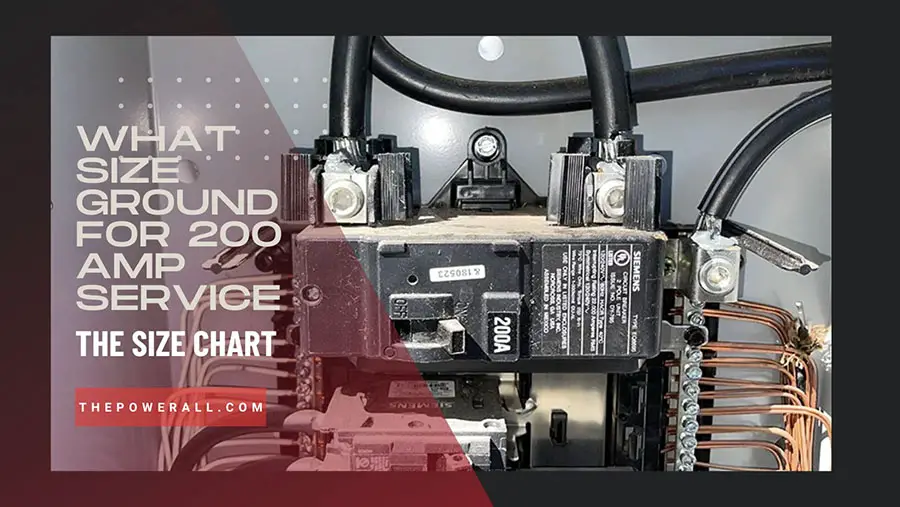

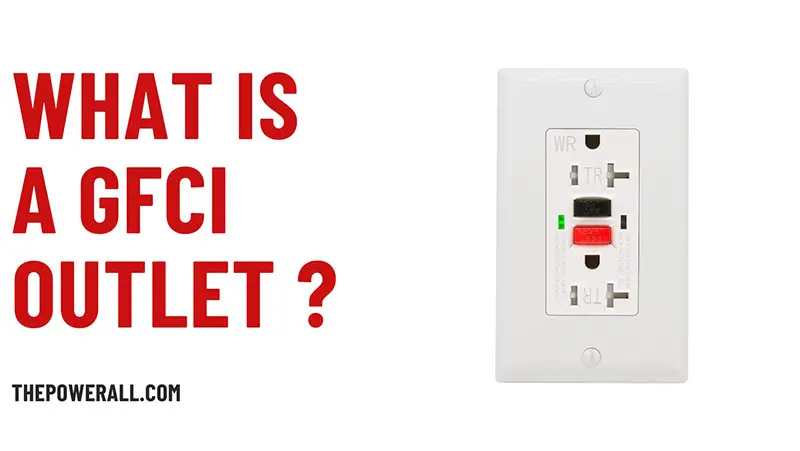
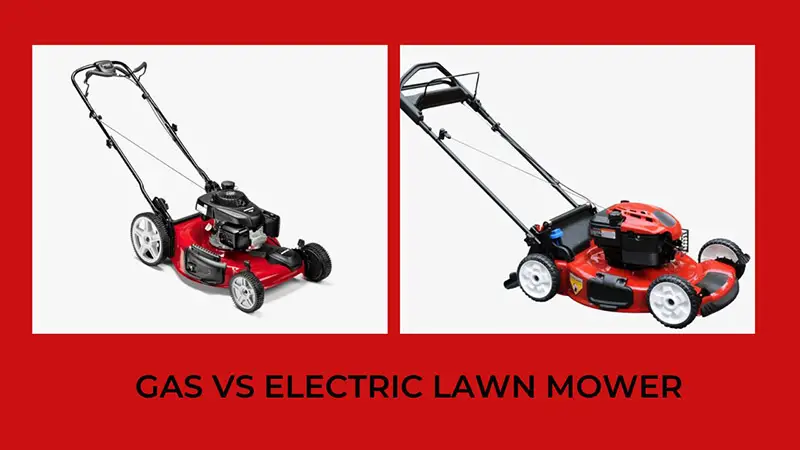
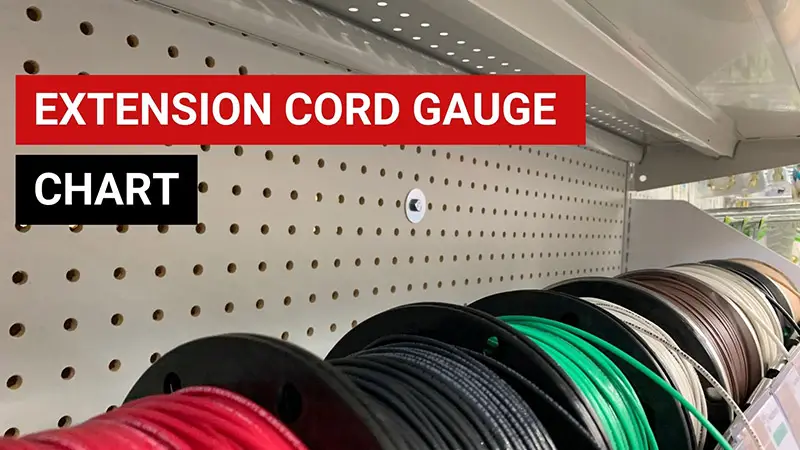
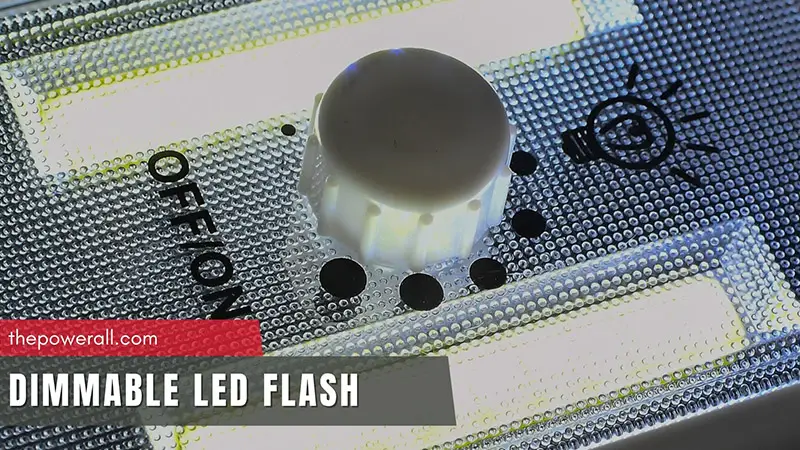
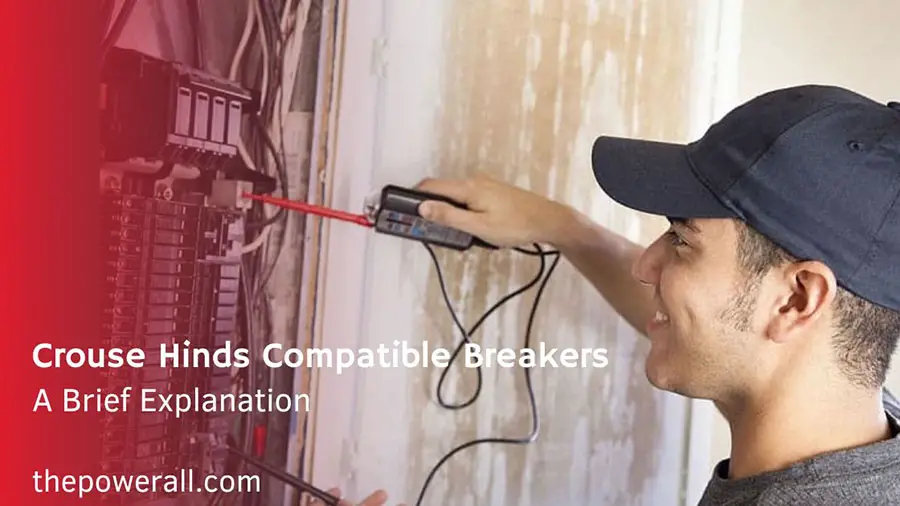
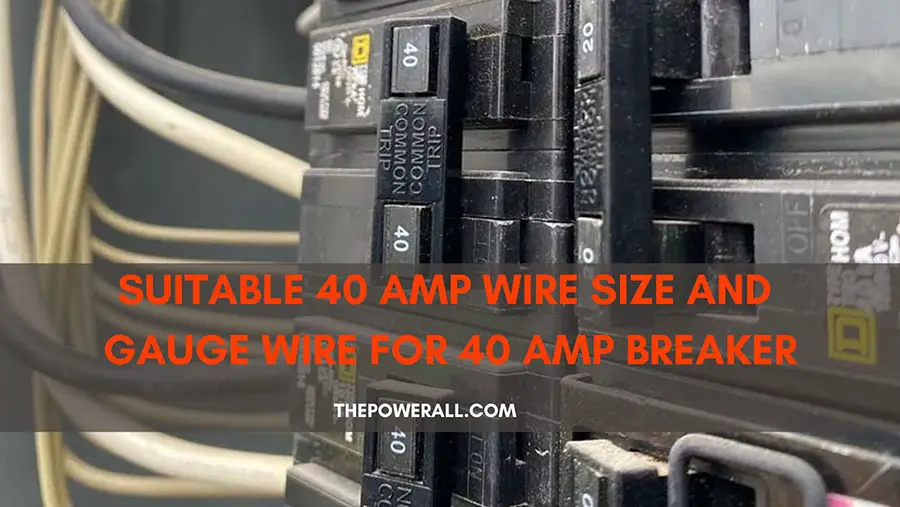
0 Comments